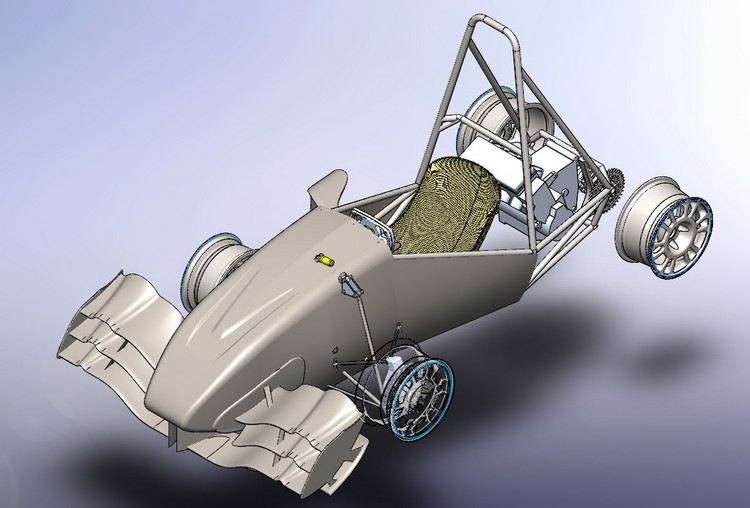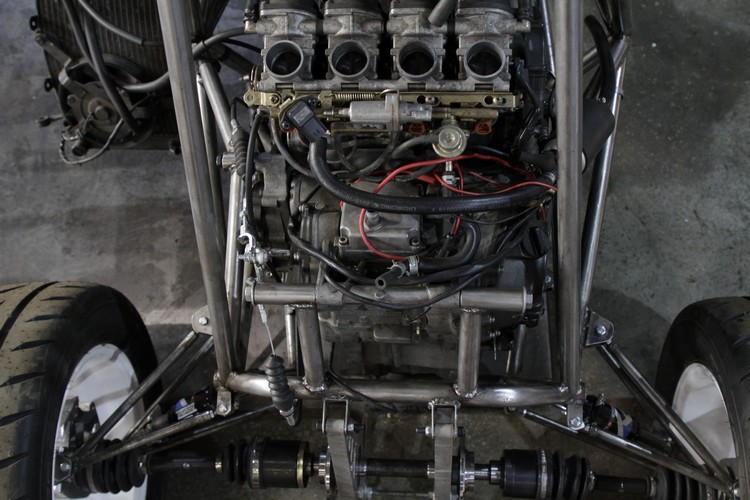A hydrogen-fueled engine under development at SPbGASU
One of the achievements of SPbGASU is a racing car, the creation of which took eighteen months. The initiative belonged to a group of students from the Automobile and Road-Building Faculty, but later students from other faculties joined them. Teachers supported the idea; the mentor of the team was Sergey A. Vorobyov, assistant professor of the Department of Transport Maintenance. The project was presented to the public at the end of February 2019. Then the car was to be finalized. We met with Sergey Vorobyov and found out what changes have occurred to the car during this period.
– What is the student team that created the race car doing nowadays?
– Now the guys are changing the suspension and the ground effects on it for the second time in a row, because during the performances in St. Petersburg it was seriously frayed. Further on, from February to May, it is planned to prepare it for the next competition - the international Formula Student Race in the Czech Republic. At the moment, students are installing a hydrogen generator onto the car.
–So it happens that the race car will run on an alternative energy source?
– That’s correct. This car is the only one of all cars in Europe and Russia that has a hydrogen additive. Hydrogen is produced on board the car, which does not contradict the requirements of the competition. We have a water tank in which it decomposes into hydrogen and oxygen. The explosive gas mixture goes into the exhaust manifold. This increases the volumetric ignition of the mixture in the cylinders, due to which the engine power increases and the negative impact on the environment goes down; we are talking about the emission of carbon dioxide and carbon monoxide. Most importantly, an instantaneous flash does not decompose nitrogen into its oxides. Therefore, it exhausts are 8.5 percent fewer oxides than a classic gas engine.
{gallery name="Воробьев 122019"}
– This topic of hydrogen energy, was it somehow discussed at the university scientific community?
– An interuniversity student engineering and technology corporation was established in Moscow. It comprises the “Formula Student” teams from all over Russia. They got united by the Crimea sports roadster (note: a car that will be created on the component base of the Russian automobile industry). Each team offers its own innovations for the implementation of this common project. Our guys, in their turn, received a proposal for the use of hydrogen reactors.
In our country, nobody else is engaged in this rather specific area, which gives SPbGASU an advantage.
– Would the car have a chance to get into mass production?
– Technically, only formal certification procedures separate us from mass production, and there should not be any problems with that. Now we continue to develop an innovative approach: we are developing an all-electric chassis on lithium-titanium batteries, which no one else has ever done in the world. The batteries will be charged using a small-size internal combustion engine based on the supply of natural methane and the addition of hydrogen and oxygen.
– Are there any other environmentally important developments underway at your department?
– Two of my postgraduate students are researching for ways to improve environmental safety; their topics are related to the use of hydrogen additives in diesel and gas engines. The impetus for this was the possible adoption of the St. Petersburg city bill, according to which entry into the city center will be banned for environmentally unfriendly transport. Accordingly, it is necessary to consider an alternative to increasing the environmental class of vehicles without buying a new car (note: the environmental class is a category designating a model of motor transport depending on the content of hazardous substances in exhausts and fuel fumes.). Both economic and environmental efficiency should be achieved simultaneously.
Interviewed by Alexandra Podolnikova
✔ Learn more about the Department of Transport Maintenance, its training programs and teachers



